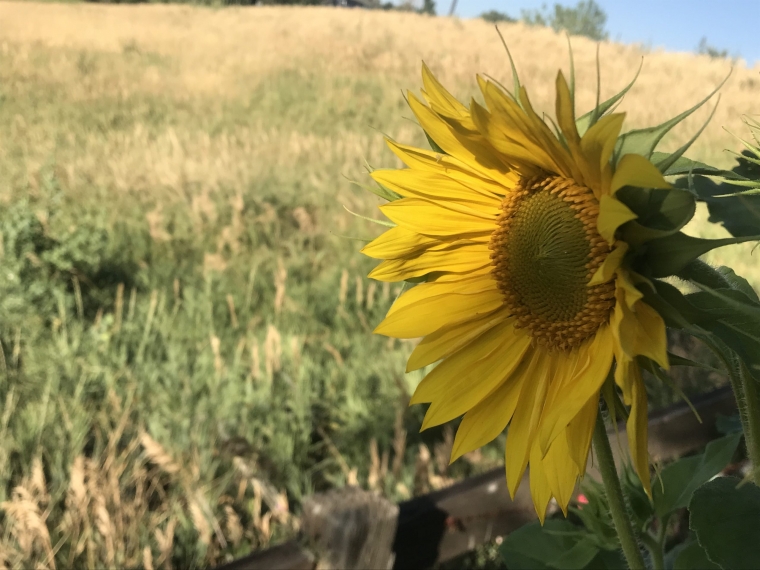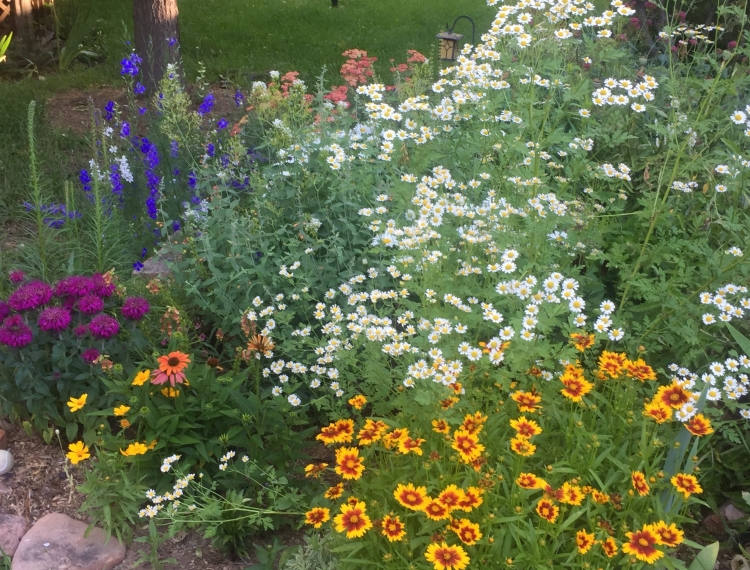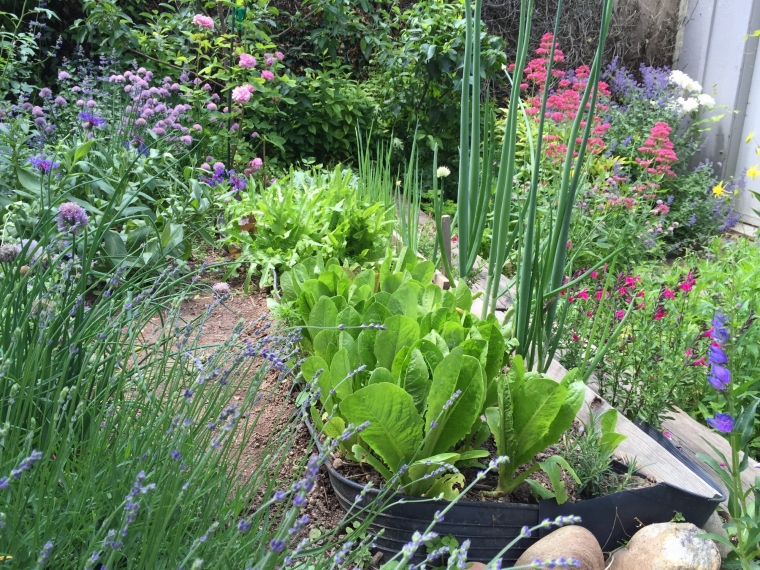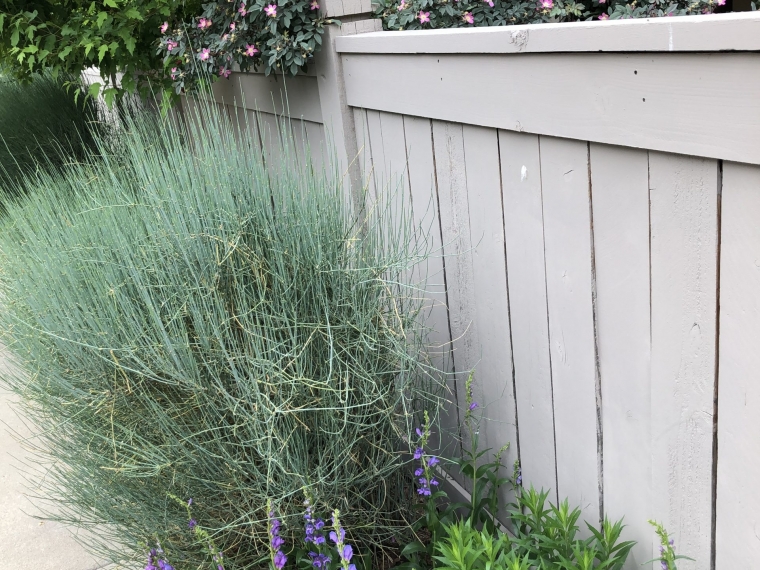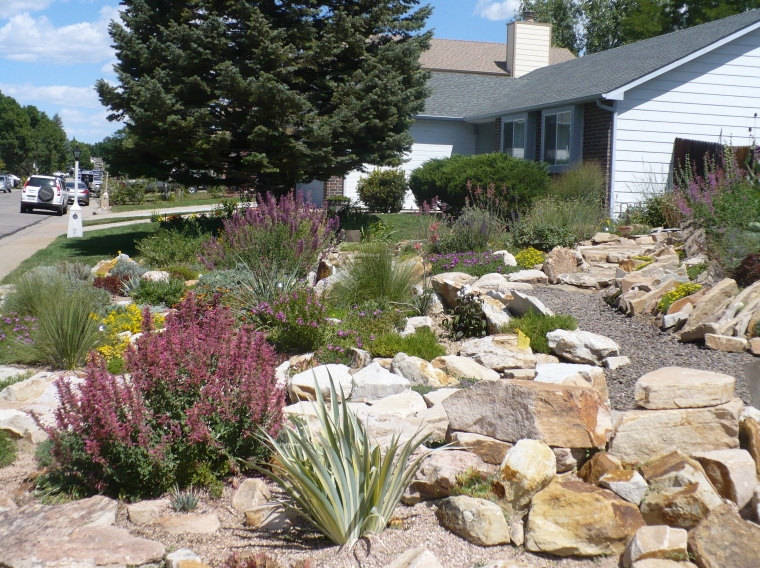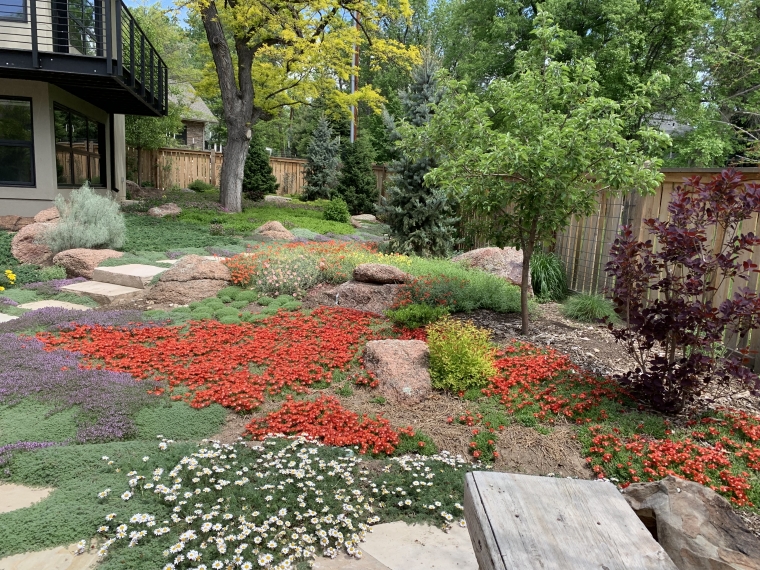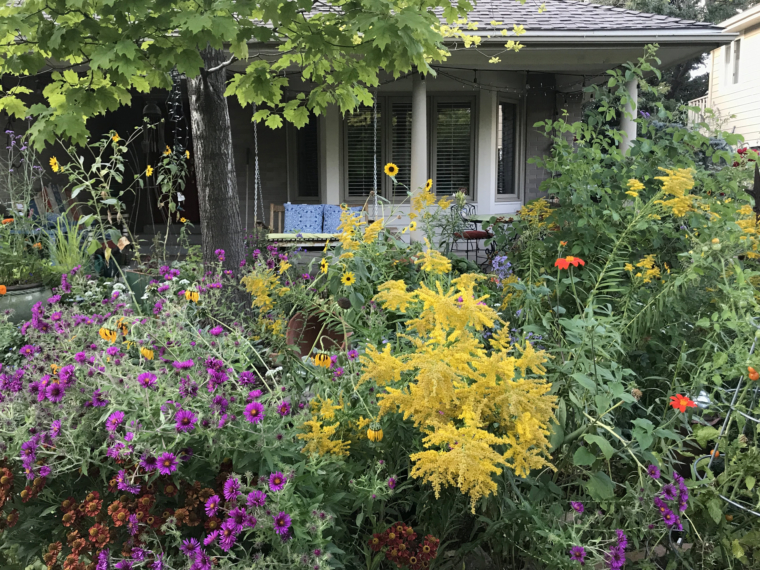1. What percentage of the plants in the pictures do you think came from Harlequin’s Gardens?
95%
2. Did you create this garden (you and your family) or did you have professional help? Describe briefly
I looked through many websites, consulted master gardeners, read garden magazines and books and created this garden.
3. What is the age of this garden? What town or area? What elevation?
This Louisville garden’s 10-ish years old.
4. What irrigation method(s) do you use and how often do you water and for how long?
We have sprinklers, drip, and mini sprinklers. Our system goes on every other day, twice a day, for 8 minutes.
5. What is your soil like? Did you amend it? With what?
Our soil was originally clay-heavy, and we have amended it yearly with compost.
6. How big is your garden and how often do you work in your garden?
In spring and summer, we are out in the garden daily. Our garden is a typical suburban plot of less than 1/4 acre.
7. What has, or currently does, inspire you to garden and use sustainable practices?
I love making birds, bees, butterflies, and other beneficial insects happy.
8. How do you deal with “weeds”? What is your approach to insect pests and disease?
We’ve crowded out weeds with dense ground covers, like lamb’s ears. I also pull weeds constantly throughout the growing season. I try to tackle pests and disease sooner rather than later, so I’m fairly vigilant assessing plants and issues in my garden. I research and apply organic and eco-conscious treatment options quickly.
9. Share a brief story about something you learned from your garden or plants, or inspiration received from gardening?
I’m a self-taught gardener and have learned through trial and error. I understand that everyone has their own process when it comes to landscape design, but I enjoy researching and cross-referencing plant information in videos, books, magazines, etc. That process is enjoyable and fills me with hope.
10. What is your experience growing plants from Harlequin’s Gardens.
My experience growing Harlequin’s Gardens plants has always been positive. The nursery rears such strong seedlings and adult plants. Everything has a tremendous chance at success.

